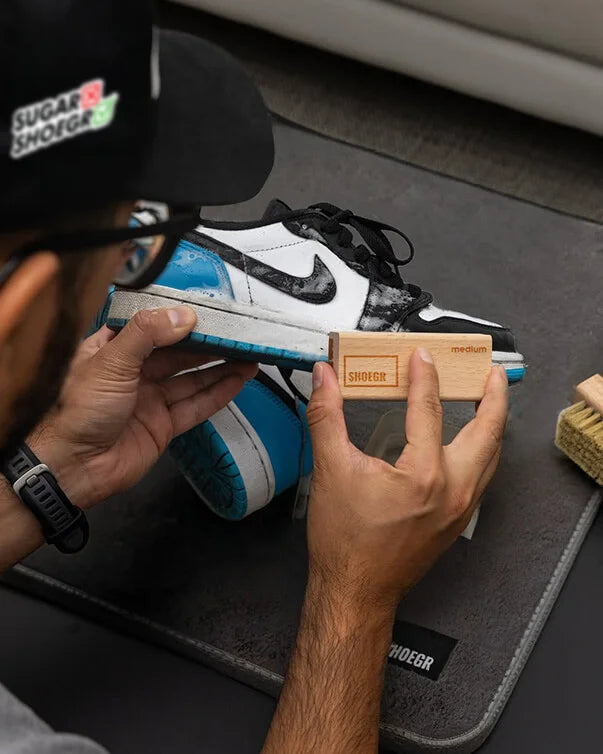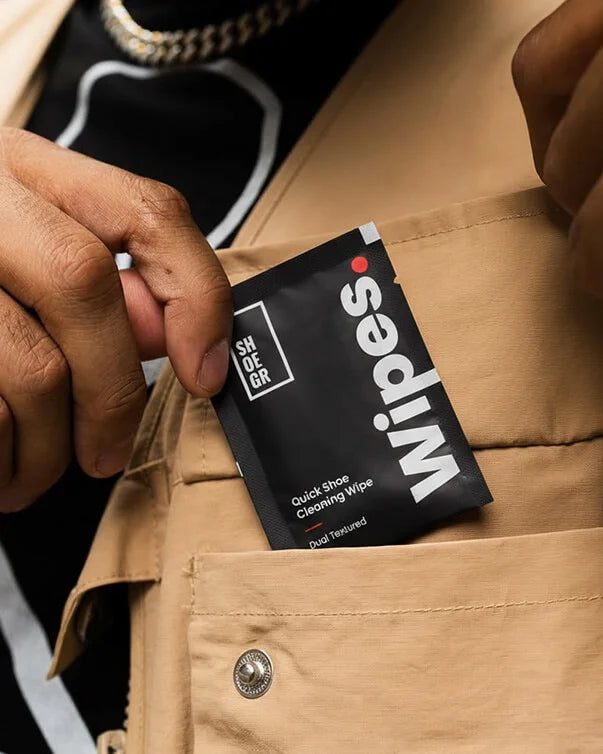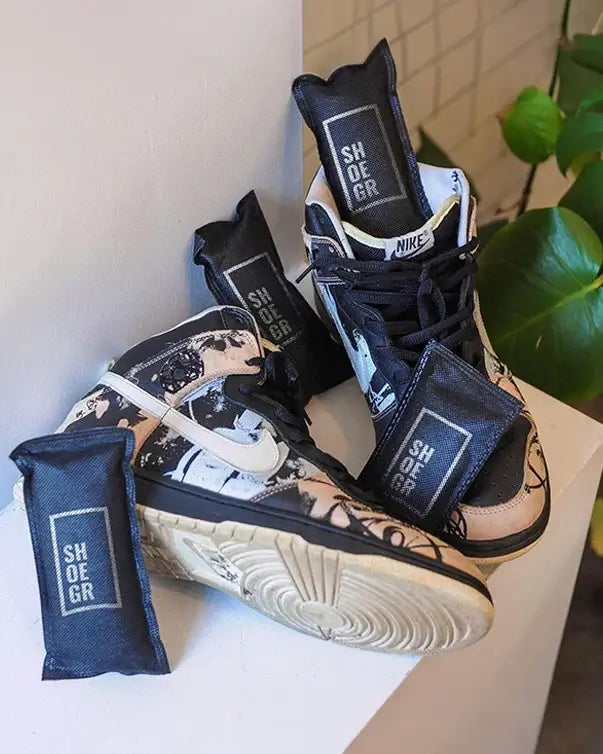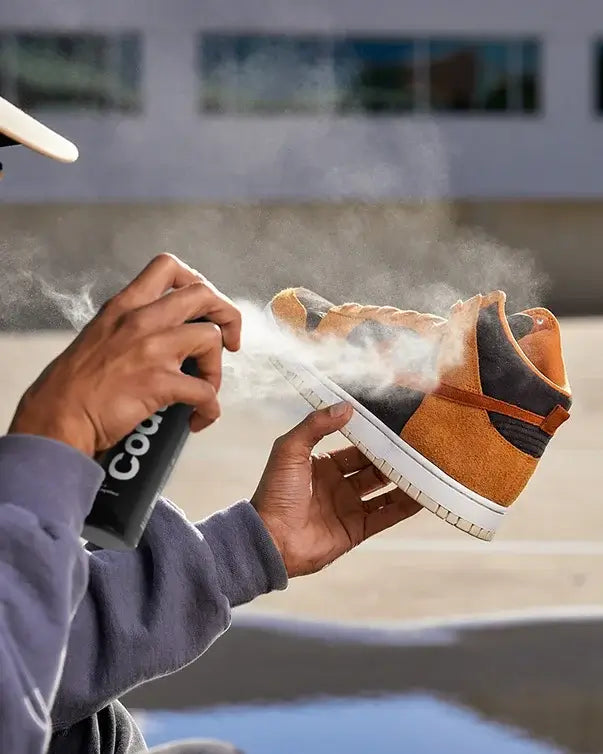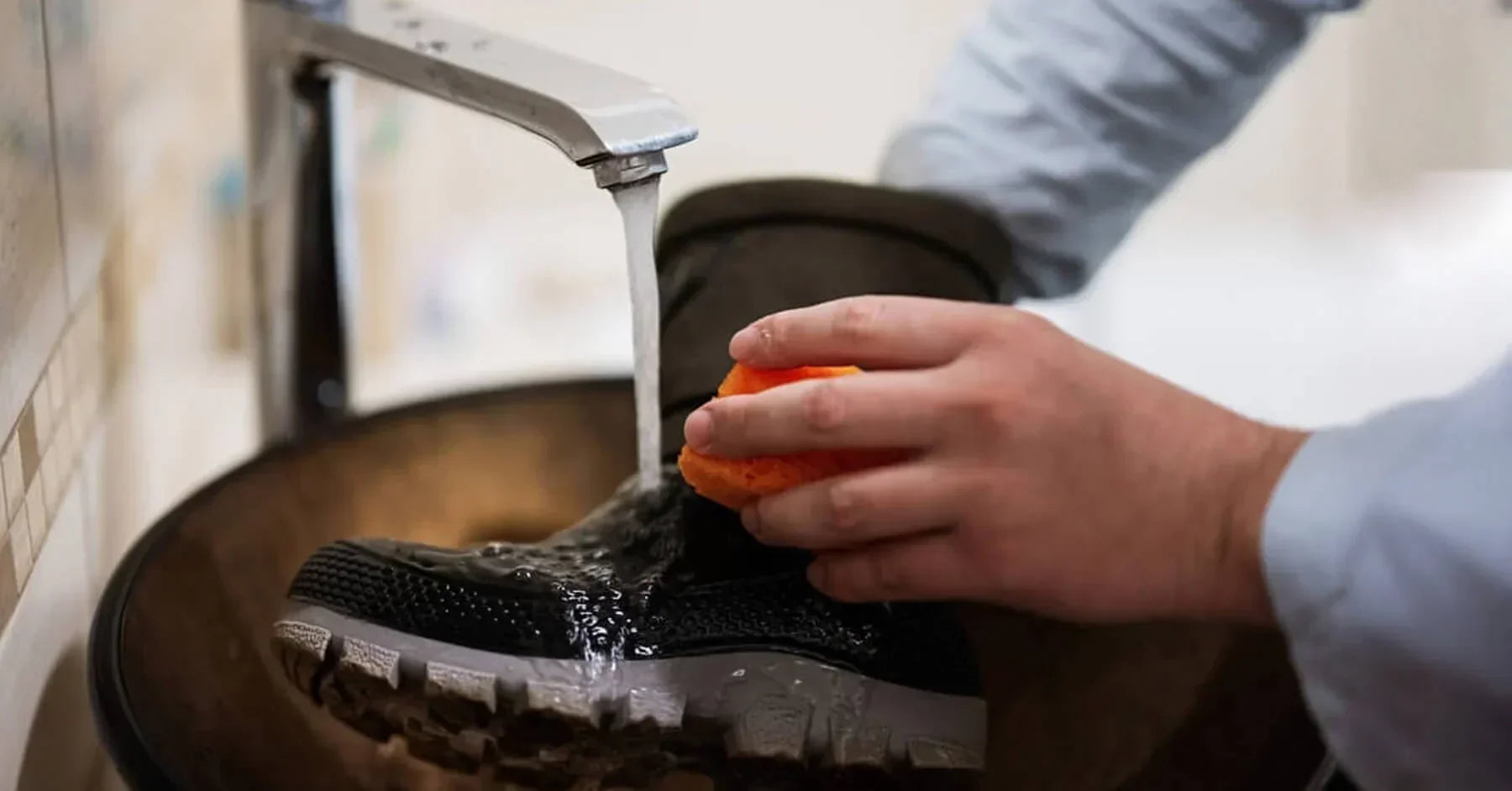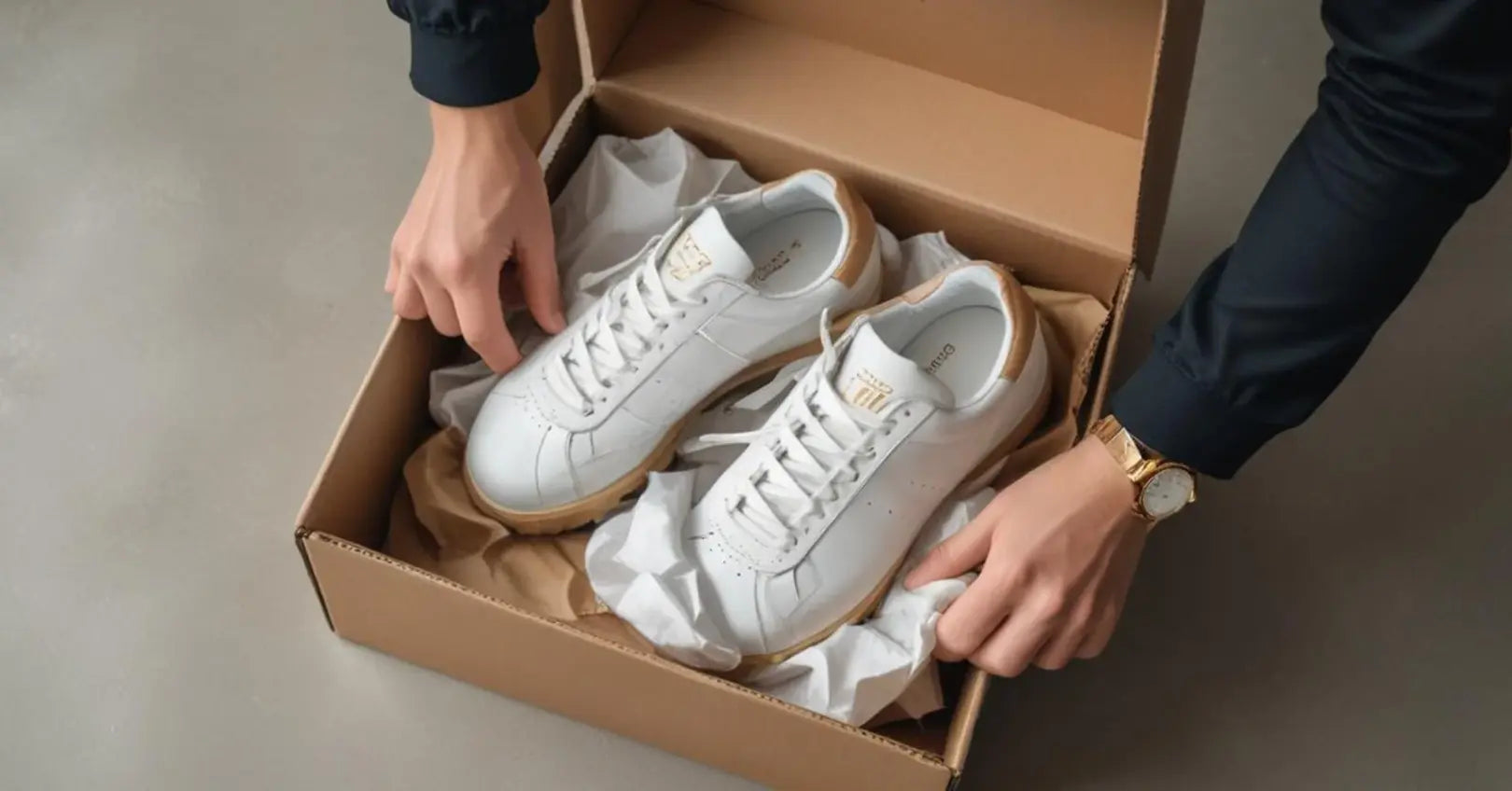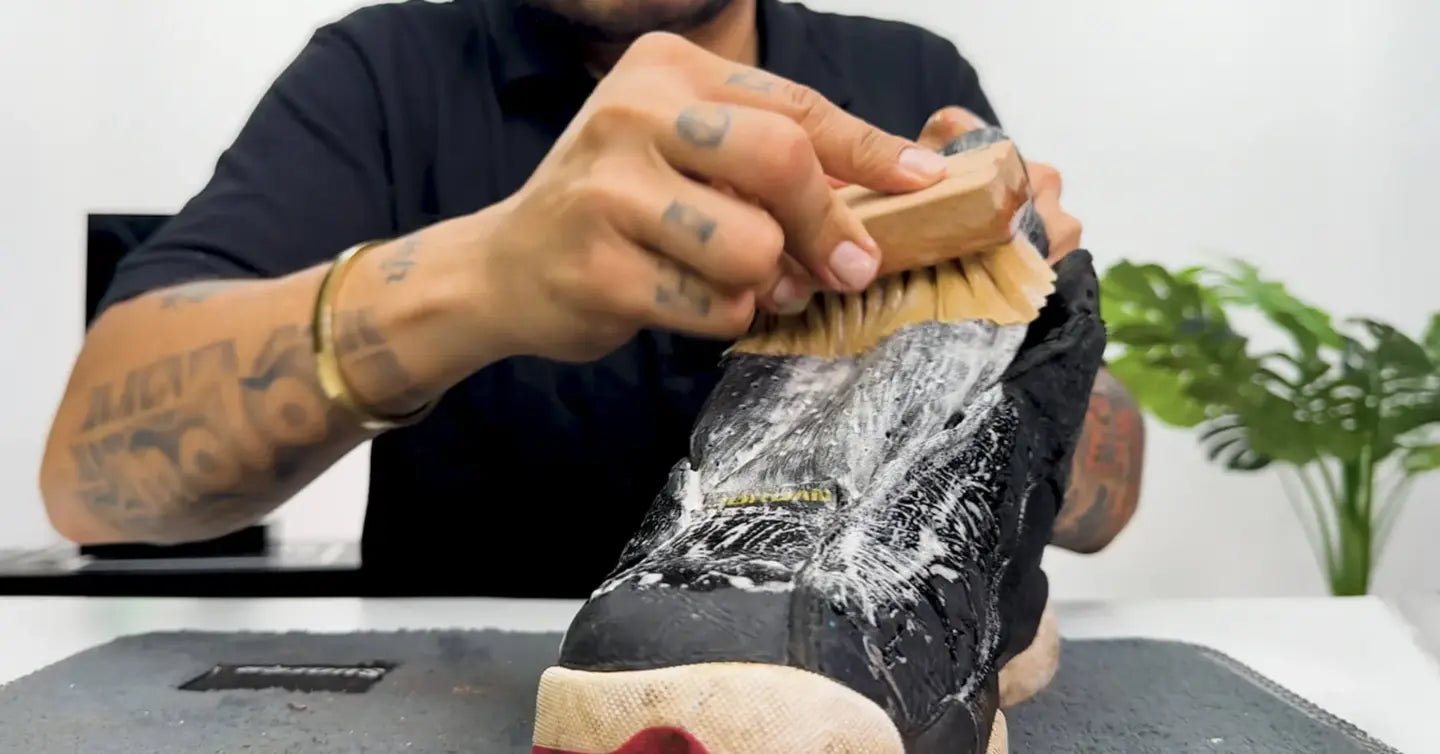
How often should you clean your sneakers? Cleaning tips by material
Whether you're rocking fresh white leather kicks or cozy suede runners, keeping your sneakers clean isn't just about looking good—it's about protecting your investment. But how often should you clean your sneakers? And does it really depend on the material?
In this guide from SHOEGR, we'll break down the best sneaker cleaning frequency based on material and give you pro tips on using the right shoe care tools and more.
Why does regular cleaning matter?
Before we talk about each shoe type, here are a few reasons why regular cleaning is important:
- Better looks: Clean sneakers look fresh and stylish.
- Longer life: Dirt and grime wear down the material, stitching, and soles over time.
- Hygiene: Dirty sneakers can collect bacteria and smell bad.
- Performance: Especially for sports sneakers, clean shoes work better.
Now let’s move on to how often and how you should clean your sneakers based on their material.
1. Leather Sneakers
1.1. How often to clean:
-
Light wipe-down: After every 2–3 wears
-
Deep clean: when visibly needed
1.2. Cleaning tips:
Leather is tough but still needs care. It’s sensitive to water and chemicals, so don’t use anything too strong.
-
Wipe off dust with a dry cloth or soft brush.
-
Use a gentle leather cleaner. Apply with a soft brush.
-
Always dry with a clean towel—don’t use heat.
-
Apply a leather conditioner after cleaning. This keeps the leather soft and prevents cracks.
1.3. Helpful tools:
A SHOEGR Shoe Cleaning Kit is the perfect solution for your sneaker cleaning needs. The kit includes a sneaker cleaning solution suitable for leather sneaker, making cleaning easy without harming the mateial.
1.4. Why does this help?
Leather can crack if it gets too dry. Cleaning and conditioning it regularly will keep it soft and shiny.
2. Canvas Sneakers
2.1. How often to clean:
-
Spot clean: When they look dirty
-
Deep clean: Every 4–6 wears
2.2. Cleaning tips:
Canvas sneakers are common and easy to clean, but they stain easily.
-
Remove the laces and insoles first.
-
Brush off loose dirt with a dry brush.
-
Mix the cleaning solution with water and scrub gently.
-
Clean the midsoles and outsoles with medium and hard brushes respectively.
-
Wipe off with a microfiber towel.
2.3. Helpful tools:
A soft brush and sneaker cleaner in a cleaning kit for sneakers work well for canvas materials. SHOEGR Ultimate Shoe Cleaning Kit is perfect for canvas sneakers.
2.4. Why does this help?
Canvas catches dirt easily. Regular cleaning will stop stains from staying too long.
3. Suede Sneakers
3.1. How often to clean:
-
Light brushing: After each wear
-
Deep clean: Every 3–5 wears, or when stains appear
3.2. Cleaning tips:
Suede is delicate. Water and harsh cleaners can damage it easily. It is important to clean these materials with extra care.
-
Use a suede brush to remove surface dirt.
-
For tough stains, use a suede eraser or dry suede cleaner.
-
Avoid water unless necessary. If the shoe gets wet, blot it dry with a towel and brush when dry.
-
Clean the midsoles and outsoles with the help of a sneaker cleaning solution or foam cleaner using the medium and hard brushes.
3.3. Helpful tools:
A suede shoes cleaner kit is best here. It usually includes a suede brush and an eraser, which help to clean the suede material with ease.
3.4. Why does this help?
Suede is soft and can get damaged easily. Brushing it often keeps it looking neat and prevents stains from setting in. The deeper stains ruin the look and material, so it's good to clean from time to time.
4. Mesh Sneakers
4.1. How often to clean:
-
Light cleaning: After 2–3 wears
-
Deep clean: Once a week or when heavily soiled
4.2. Cleaning tips:
-
Mesh is breathable but attracts a lot of dust and dirt.
-
Remove laces and insoles before cleaning.
-
Use a soft-bristled brush to avoid tearing the fabric.
-
Mix a small amount of sneaker cleaner with water, dip the brush, and gently scrub the surface.
-
Use a microfiber cloth to wipe away the dirt.
-
Avoid soaking mesh shoes in water. They can lose shape and take a long time to dry.
-
Clean midsoles and outsoles with a medium or hard brush and a shoe cleaning solution.
4.3. Helpful tools:
- A cleaning kit for sneakers that includes soft, medium, and hard brushes along with a sneaker cleaner is ideal.
- Microfiber towels and mesh-safe foam foam cleaners also help.
4.4. Why does this help?
Mesh material is light and breathable, but it holds onto dirt and stains quickly. Gentle, regular cleaning keeps the fabric looking fresh and helps the shoes stay odor-free and breathable. If ignored, stains can settle into the weave and become hard to remove later.
5. Knit Sneakers (Flyknit, Primeknit, etc.)
5.1. How often to clean:
-
Light brushing: After 1–2 wears
-
Deep clean: If stains are visible
5.2. Cleaning tips:
-
Knit sneakers are flexible and comfortable, but the fabric can snag or stretch.
-
Always remove laces and insoles before cleaning.
-
Use a soft-bristle brush to gently clean the knit areas.
-
Apply a sneaker cleaner diluted with water or use a foam-based product for better control.
-
Avoid using too much water. Too much moisture can affect the glue and cause the shoe to lose shape.
-
Clean the soles with a medium or hard brush, depending on the level of dirt.
5.3. Helpful tools:
A complete shoe cleaning kit is useful. It should include:
-
Soft brush for knit areas
-
Medium brush for midsoles
-
Hard brush for outsoles
-
Sneaker cleaner and microfiber cloth
Avoid rough clothes that may snag the knit material. It’s better to use a microfiber towel for better results.
5.4. Why does this help?
Knit sneakers look sleek and modern, but they are also delicate. Dirt can get trapped in the threads easily. Regular, gentle cleaning helps maintain the stretch, shape, and clean appearance of the shoes. Ignoring stains can cause discoloration and reduce the life of the sneaker.
How to know it’s time to clean? (Points to be noted)
You don’t always need a schedule to know when to clean your sneakers. Just keep an eye out for these signs:
-
Visible dirt or stains.
-
Bad smell from the inside.
-
The color starts to change.
-
The soles look worn or muddy.
-
They feel uncomfortable or sticky
If you notice any of these signs, it’s time for a clean-up session!
Extra tips for all sneaker types
No matter what type of sneakers you wear, there are a few general tips that apply to all materials:
✅ Remove laces and insoles
Take these out before cleaning. You can wash the laces by hand separately.
✅ Always air dry
Never use a dryer or place sneakers in direct sunlight. This can cause them to shrink, crack, or yellow. Air dry in a cool, shaded place. Stuff them with paper towels or a shoe shaper to keep their shape and soak up moisture.
✅ Store them right
Once your sneakers are clean and dry, store them in a cool, dry place. Use shoe trees or stuff them with paper to help maintain their shape.
✅ Use the right tools
Using a shoe cleaning kit helps you avoid damaging your shoes. These shoe cleaning kits include brushes and cleaners that are made for different materials. And always remember to use the dedicated brush for every part of the shoe, i.e., soft for uppers, medium for midsoles and hard for outsoles.
Conclusion
So, how often should you clean your sneakers?
That depends on how often you wear them and what they’re made of—but the rule of thumb is clean often, clean gently, and use the right tools.
By building a cleaning routine and investing in a proper shoe cleaning kit, you’ll keep your sneakers looking like new, no matter what they’re made of.

